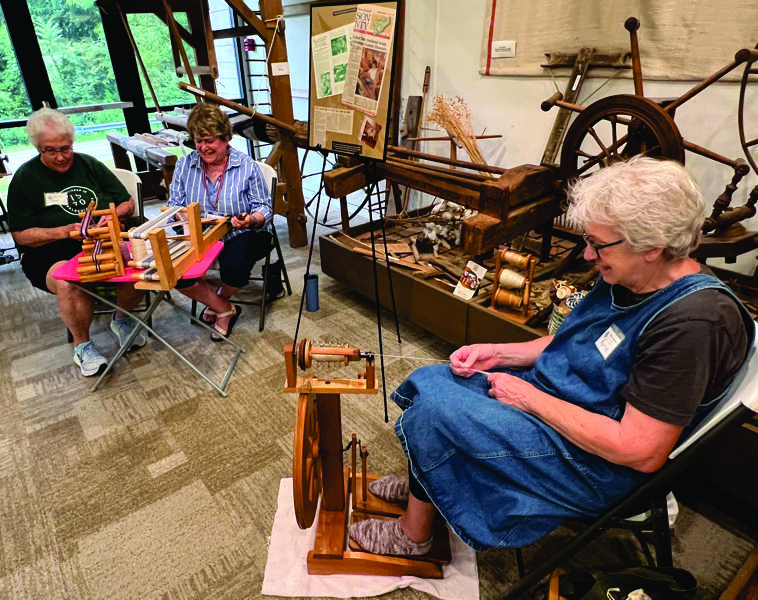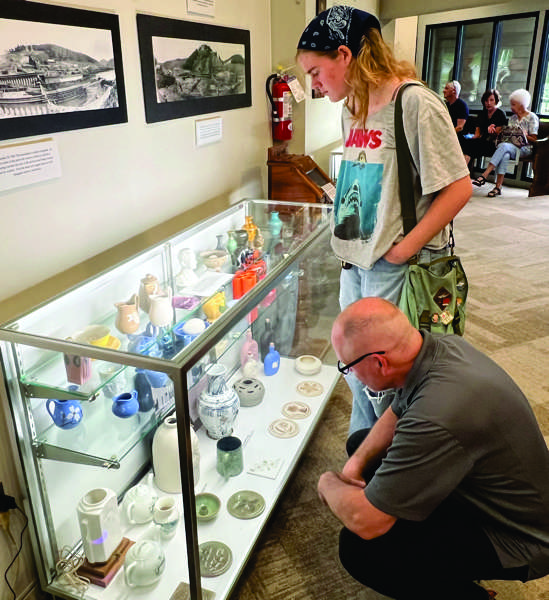50 years: Lenoirs’ legacy lives in artifacts
There was a steady stream of visitors to the Lenoir Museum last Thursday (July 10) during the museum’s 50th anniversary celebration at the facility in Norris Dam State Park along Norris Freeway (U.S. 441).
Several special exhibits were on display, including spinning and weaving demonstrations, history of the Civilian Conservation Corps (CCC) construction of the park in the aftermath of the Great Depression.
Barry Thacker, speaking in the persona of early Welsh coal miner David Thomas, presented a history of coal mining in the area, which was centered around Briceville and Coal Creek, the original name of the community now known as Rocky Top.
The museum, which opened on July 10, 1975, features hundreds of artifacts representing Appalachian history that were collected over several decades by Will G. and Helen H. Lenoir.
Built on land that the Tennessee Valley Authority donated to the Tennessee state park system, the museum adjacent to the Crosby Threshing Barn and 18th-cCentury Rice Grist Mill along Lower Clear Creek Road.
Among the museum’s displays are Indian artifacts, fine china, pressed glass, furniture, farm implements, bottles, bells, baskets, rocks, historical documents and more.
The Tennessee state parks website notes that “The Lenoir Museum contains artifacts from Early Americana which were collected for [more than] 60 years by Will G. Lenoir and his wife Helen, and donated by the Lenoirs to the state of Tennessee.
“The Lenoirs strongly desired that the rapidly changing times not wipe out an appreciation of the hard work and ingenuity that were a part of everyday life. They searched for, bought and stored away artifacts to preserve an understanding of that life.
“It was not just the artifacts they collected, but also the stories of the people behind them and their use. Many thought that Mr. Lenoir was ‘crazy’ to pay for items they had discarded to their barn or shed.
“Numerous items in this museum would have been lost had they not caught the eye of the Lenoirs,” the website entry continues. “Sometimes only one board from a wooden bucket would still be visible, or one chair leg, and Mr. Lenoir would scratch in the dirt, straw, or worse, searching for the other pieces.
“He occasionally found all the parts and put them back together again. When all the parts could not be found, he would make parts necessary for restoration, or locate an artisan who could do the job.
“In his searches throughout the countryside, he discovered a few [craftsmen] skilled in producing items such as wooden churns no longer in use. He brought these artists to the attention of others and encouraged appreciation of the old time crafts.”



